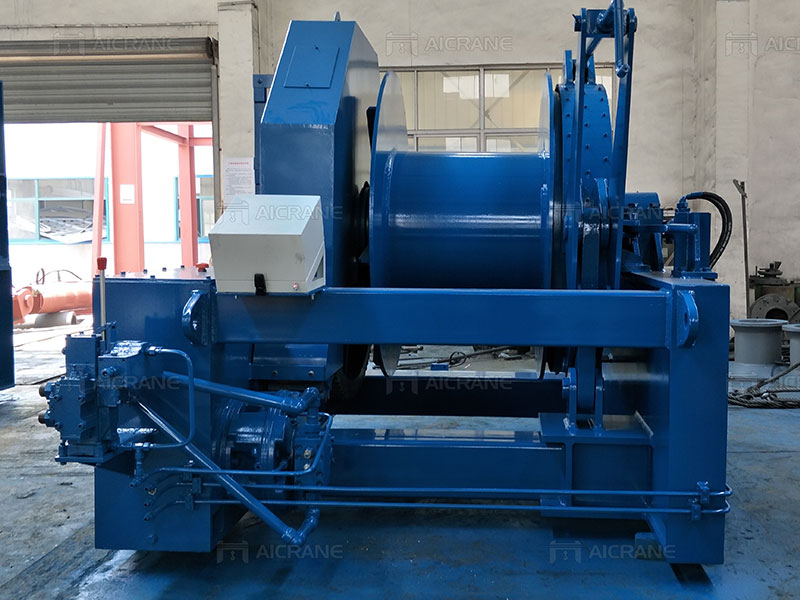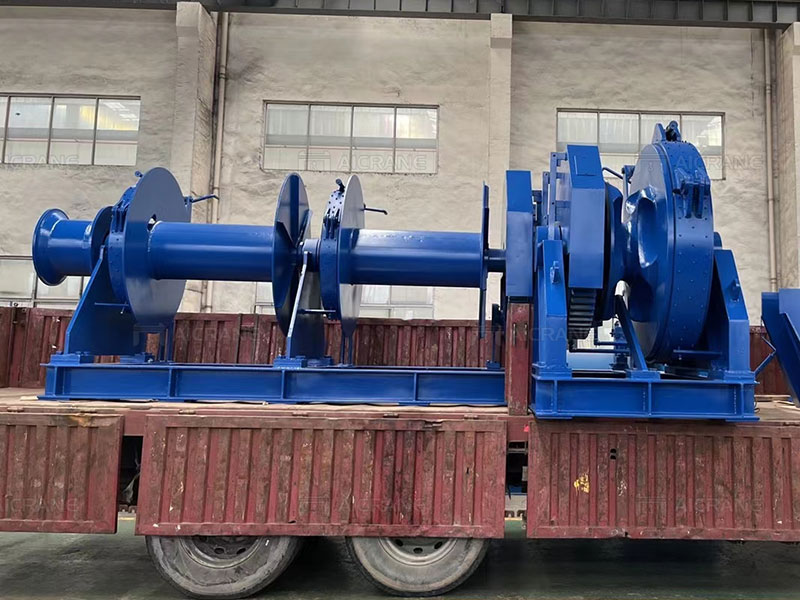In the realm of maritime operations, where heavy loads and challenging environments are the norm, the proper operation and installation of equipment play a crucial role in ensuring safety, efficiency, and reliability. One such indispensable tool in the maritime industry is the marine hydraulic winch. These powerful devices are used for various tasks, ranging from anchoring and mooring to lifting and towing, making them an essential component of ships, offshore platforms, and other marine structures. In this article, we delve into the intricacies of marine hydraulic winch operation and installation, exploring the key considerations and best practices that contribute to seamless and effective maritime operations.
Understanding Marine Hydraulic Winches
A hydraulic winch is a mechanical device that utilizes hydraulic power to wind in or let out a cable or rope. Its primary function is to exert force to pull, lift, or drag heavy loads. In the marine context, marine hydraulic winches are widely preferred due to their ability to deliver high levels of power while maintaining precise control. Unlike electric winches, which may experience overheating during prolonged use, hydraulic winches offer consistent performance even under demanding conditions.

A typical marine hydraulic winch consists of several components, including the hydraulic motor, hydraulic pump, gearbox, drum, control valve, and various hydraulic hoses and fittings. The hydraulic motor converts hydraulic fluid’s energy into mechanical power, driving the winch’s operation. The hydraulic pump supplies pressurized hydraulic fluid to the motor, while the gearbox enables the motor’s torque to be transmitted effectively to the drum. The drum is where the cable or rope is wound, and the control valve regulates the direction and speed of the winch.
Installation Considerations
Proper installation of a marine hydraulic winch is a critical step in ensuring its optimal performance and longevity. Several factors need to be considered during the installation process:
1. Structural Integrity:
The installation site’s structural integrity is of paramount importance. The mounting surface should be capable of withstanding the winch’s operational forces, especially when dealing with heavy loads. Reinforcements might be required to distribute the load and prevent deformations or failures.
2. Alignment and Positioning:
Accurate alignment and positioning of the winch components are crucial to prevent misalignment issues that can lead to premature wear, reduced efficiency, and safety hazards. Proper alignment ensures that the components, such as the motor, pump, and gearbox, work harmoniously.
3. Accessibility:
Consider the accessibility of the marine winch for maintenance and repairs. Adequate space should be provided around the winch for technicians to carry out routine maintenance, inspections, and any necessary repairs without hindrance.
4. Hydraulic System Design:
The hydraulic system that powers the winch should be well-designed, with the appropriate pump capacity, fluid reservoir, and filtration system. Proper hydraulic system design ensures consistent power delivery and minimizes the risk of overheating or fluid contamination.
5. Safety Measures:
Safety is paramount in marine operations. Ensure that safety mechanisms, such as emergency stop buttons and load limiters, are integrated into the winch’s control system. Adequate shielding and protective measures should also be in place to prevent accidental contact with moving parts.

Operational Best Practices
Once a marine hydraulic winch is correctly installed, adhering to operational best practices is essential for efficient and safe usage:
1. Operator Training:
Only trained personnel should operate the hydraulic winch. Operators should understand the control panel, emergency procedures, and safe operating practices to prevent accidents and equipment damage.
2. Regular Inspections:
Frequent inspections of the winch’s components, hydraulic hoses, and fittings are necessary to identify signs of wear, leakage, or other issues. Timely maintenance can prevent small problems from escalating into major failures.
3. Lubrication:
Proper lubrication of moving parts, such as the gearbox and drum bearings, is crucial to reduce friction and extend component life. Use lubricants recommended by the manufacturer and adhere to the recommended lubrication schedule.
4. Load Monitoring:
Always operate the winch within its designated load capacity. Overloading the winch can lead to excessive strain, reduced efficiency, and potential equipment failure. Load monitoring systems can help prevent overloads.
5. Controlled Operation:
Operate the winch at controlled speeds, especially when handling delicate or valuable cargo. Sudden starts or stops can cause jerking motions that may damage the load or the winch components.
6. Environmental Considerations:
Consider the marine environment’s challenges, such as saltwater exposure, temperature variations, and corrosive elements. Regularly clean and inspect the ship winch to prevent corrosion and ensure proper functioning.
Conclusion
Marine hydraulic winches are indispensable tools in maritime operations, performing a variety of tasks that are essential to the industry. Proper installation and operation are paramount for ensuring the safety of personnel, safeguarding valuable cargo, and maintaining efficient operations. By adhering to best practices during installation and operation, maritime professionals can harness the full potential of hydraulic winches, contributing to the success of their endeavors on the open seas.